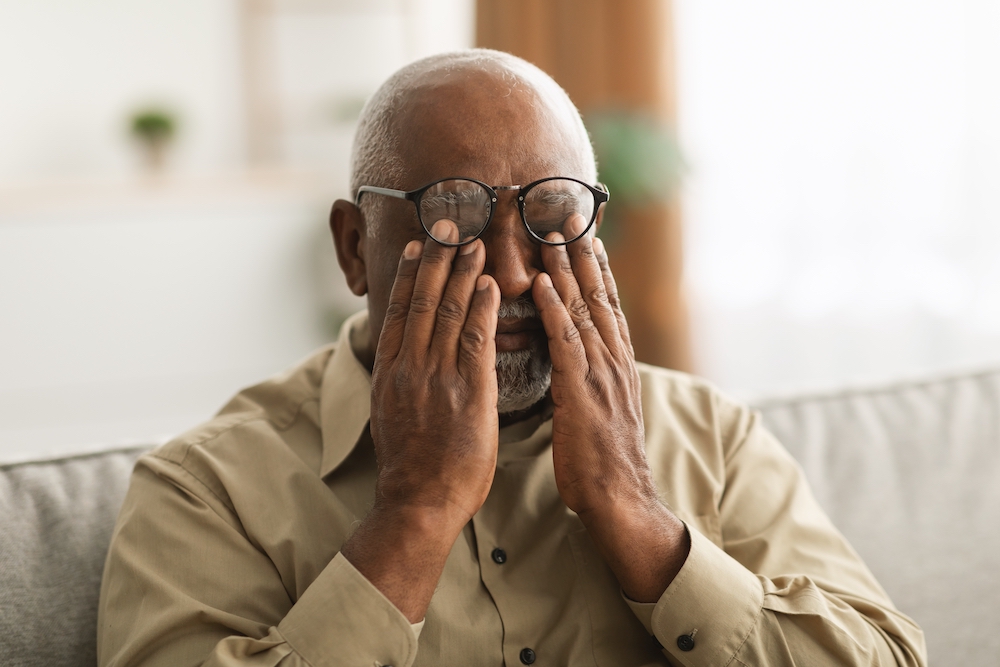What Is Dry Eye, and How Is It Diagnosed?

Dry eye occurs when the eyes fail to make enough tears to remain wet or tears fail to work correctly. It can leave the eyes feeling dry and uncomfortable, sometimes leading to vision problems. If your eyes feel scratchy and dry, you should visit your eye doctor for a test. These are common symptoms of dry eye disease. Testing will help determine if your eyes are making adequate tears. What is dry eye, and how is it diagnosed?
How Tears Work
A constant film of tears covers the eye, keeping the ocular surface clear and smooth. The tear film that is essential for good vision consists of three layers: oil, water, and mucus. The oil layer is the outer part of the tear film, made in the meibomian glands.
The watery layer is in the middle and comes from the lacrimal glands. The mucus is the inner layer produced in the conjunctiva. If something affects the layers, the eyes may not produce enough tears, resulting in dry eyes.
Symptoms of Dry Eye
Some symptoms indicate you may have dry eye syndrome. They include:
Stinging or burning sensation
Blurred vision when reading
Gritty or scratchy feeling
Red or irritated eyes
Stringy mucus discharge from the eyes
Difficulty wearing contacts
Excessive tearing
Causes of Dry Eye
The aging process can lead to dry eye, as hormonal changes cause the production of fewer tears. The condition is more common in women, especially after menopause. Certain medications and health conditions, such as lupus, Sjogren’s syndrome, rheumatoid arthritis, and thyroid disease, can cause dry eye.
Other causes are eye conditions such as blepharitis, entropion and ectropion, using contact lenses, having refractive surgery, and prolonged computer use. Dry, windy climate and smoke can worsen dry eye symptoms.
How Dry Eye Is Diagnosed
An ophthalmologist will conduct a comprehensive eye exam to determine if you have dry eye. Various tests help with the diagnosis. They include:
Slit lamp test to determine if the eyes are producing enough tears
Schirmer test or phenol red thread test measures the volume of tears
Tests using special dyes to assess the quality of tears
Tear osmolarity test to measure water and particles in the eyes
Tear break-up time (TBUT) to check how long the tear film lasts after blinking
Tear samples to check for markers of dry eye
Treating Dry Eye Condition
People with mild or occasional dry eye symptoms can benefit from regular artificial tears or eye drops. Severe or persistent symptoms require treatment based on the cause of the condition. Some treatment options focus on managing or reversing the symptoms.
Other treatments help improve tear quality or prevent tears from draining too quickly. Treatment options include oral medications, eye drops, eye inserts, punctal plugs, intense-pulsed light therapy, and special contact lenses.
There are things you can do to relieve dry eye symptoms. Eating a healthy diet, wearing eye protection outdoors, and staying hydrated can help prevent dry eye. Using a warm eye compress and massaging the eyelids can help soothe the eyes. There are eyelid cleaners and ointments that can help provide relief.
For more on dry eye and its diagnosis, contact Claremore Eye Associates at our Claremore, Oklahoma office. Call (918) 233-3319 to schedule an appointment today.



